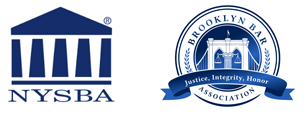The Second Department reiterated the general rule on a pre-answer motion to dismiss that letters and emails are generally not considered documentary evidence within the meaning of CPLR 3211(a)(1). In First Choice Plumbing Corp. v Miller Law Offices, PLLC, 164 AD3d 756 [2d Dept 2018], the court held:
The plaintiffs First Choice Plumbing Corp. (hereinafter First Choice) and Malacy Plumbing Supply, Inc. (hereinafter Malacy), commenced this action to recover damages for legal malpractice against the defendant Miller Law Offices, PLLC, for its alleged negligence concerning two mechanic’s liens. The complaint alleges that the plaintiffs failed to receive full payment for plumbing services and supplies they provided on a construction project, and that the plaintiffs each filed a mechanic’s lien to recover the monies owed. The complaint further alleges that the liens were extended once, but subsequently lapsed and were extinguished by operation of law, due to the defendant’s negligence.
The defendant made a pre-answer motion to dismiss the complaint pursuant to CPLR 3211(a)(1), (5), and (7). The defendant argued, among other things, that no attorney-client relationship existed with respect to the mechanic’s liens. In support of that contention, the defendant submitted copies of the lien extensions, which were filed by nonparty Speedy Lien; a copy of a contract between First Choice and nonparty Construction Lien Consultants, LLC, to investigate, recover, and/or settle the debts owed to First Choice, as reflected in one of the mechanic’s liens; and emails and a letter. In the order appealed from, the Supreme Court found *173 that the defendant submitted documentary evidence which utterly refuted the plaintiffs’ allegation that there was an attorney-client relationship between them and the defendant with respect to the liens and their extensions. Accordingly, the court granted that branch of the defendant’s motion which was pursuant to CPLR 3211(a)(1) to dismiss the complaint on the ground that no attorney-client relationship existed, and denied, in effect, as academic, the remaining branches of the defendant’s motion. The plaintiffs appeal.
A motion pursuant to CPLR 3211(a)(1) to dismiss the complaint on the ground that the action is barred by documentary evidence “may be appropriately granted only where the documentary evidence utterly refutes plaintiff’s factual allegations, conclusively establishing a defense as a matter of law” (Goshen v. Mutual Life Ins. Co. of N.Y., 98 N.Y.2d 314, 326, 746 N.Y.S.2d 858, 774 N.E.2d 1190; see Leon v. Martinez, 84 N.Y.2d 83, 88, 614 N.Y.S.2d 972, 638 N.E.2d 511). “In order for evidence to qualify as ‘documentary,’ it must be unambiguous, authentic, and undeniable” (Granada Condominium III Assn. v. Palomino, 78 A.D.3d 996, 996–997, 913 N.Y.S.2d 668; see Fontanetta v. John Doe 1, 73 A.D.3d 78, 86, 898 N.Y.S.2d 569). “[J]udicial records, as well as documents reflecting out-of-court transactions such as mortgages, deeds, contracts, and any other papers, the contents of which are essentially undeniable, would qualify as documentary evidence in the proper case” (Fontanetta v. John Doe 1, 73 A.D.3d at 84–85, 898 N.Y.S.2d 569 [internal quotation marks omitted] ). “Conversely, letters, emails, and affidavits fail to meet the requirements for documentary evidence” (25–01 Newkirk Ave., LLC v. Everest Natl. Ins. Co., 127 A.D.3d 850, 851, 7 N.Y.S.3d 325; see Phillips v. Taco Bell Corp., 152 A.D.3d 806, 807, 60 N.Y.S.3d 67; Prott v. Lewin & Baglio, LLP, 150 A.D.3d 908, 909, 55 N.Y.S.3d 98; Gawrych v. Astoria Fed. Sav. & Loan, 148 A.D.3d 681, 682, 48 N.Y.S.3d 450).
Here, the emails and letters submitted in support of the defendant’s motion were not documentary evidence within the meaning of CPLR 3211(a)(1). To the extent that the other evidence submitted was documentary, that evidence did not conclusively establish the absence of an attorney-client relationship between the plaintiffs and the defendant with respect to the liens and their extensions. Thus, the Supreme Court should not have granted that branch of the defendant’s motion which was to dismiss the complaint on this ground.






